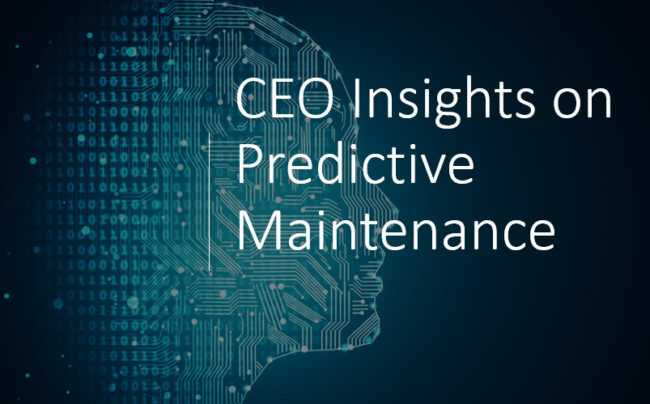Connected sensors & machine learning – two current trends in predictive maintenance
The emerging market for Predictive Maintenance (PdM) shows increasing growth as maintenance strategies move from what has been known as Condition-based Maintenance to Analytics-and IoT-enabled PdM, according to a report published this year by IoT Analytics, a leading provider of market insights for the Internet of Things. The Predictive Maintenance report forecasts a compound annual growth rate for Predictive Maintenance of 39% between 2016-2022, with annual technology spending reaching US$10.96 Billion by 2022. These numbers are based on the PdM related revenue of leading technology companies in the field, across 13 industries and 7 technology areas.
Saar Yoskovitz, Augury’s CEO, gives us insights about the current state of predictive maintenance and what are the most common obstacles to condition monitoring & PdM success. Also, he explains the process of PdM implementation.
Lucian Fogoros: What are the current trends in predictive maintenance?
Saar Yoskovitz: The two main trends taking hold in the predictive maintenance space are connected sensors and machine learning. By consistently monitoring factors like vibrations, temperature, ultrasound and electromagnetic emissions from machinery we are able to provide our partners with real-time insights into their machines while constantly improving the accuracy of our diagnostics and predictive maintenance solution. As we grow our library of mechanical malfunctions, our machine learning-based algorithms become increasingly more capable of understanding the state of the machine, anticipating further disrepair and giving immediate maintenance suggestions to technicians.
Lucian Fogoros: How can predictive maintenance transform a manufacturing facility into a smart factory?
Saar Yoskovitz: If we define “smart factory” as a facility utilizing technology that enables management to make smart decisions based on data and insights, then PdM is definitely a key component in getting there. Tools that make PdM possible are capable of transforming raw data into actionable insights, which in turn, lead to informed decisions.
Lucian Fogoros: Where is the best place to start when implementing a predictive maintenance approach?
Saar Yoskovitz: The best place to start is evaluating the needs and inefficiencies of the facility. This varies widely from one industry to the other – some facilities focus on downtime prevention, where others focus on decreasing maintenance costs. Identifying the specific priorities and goals for a facility will make the implementation of a predictive maintenance regime significantly smoother and more effective.
Lucian Fogoros: What are other considerations when implementing predictive maintenance?
Saar Yoskovitz: It’s important to understand that deploying a PdM solution in a facility is as much a mindset shift as it is a technological one. Predictive maintenance will impact operations throughout the entire organization, from the factory floor to the C-suite. For this reason, both management and employees need to understand the impact of such programs and how they will help the team make business decisions based on insights.
Lucian Fogoros: What are the most common obstacles to condition monitoring & predictive maintenance success?
Saar Yoskovitz: Often times change is a huge obstacle for any new technology implementation. Organizational buy-in is a huge factor in determining success. One might incur resistance from all levels of staff to change their daily routine.
Lucian Fogoros: How do the predictive maintenance tools lower costs in manufacturing?
Saar Yoskovitz: A study conducted on data centers in 2010 found that the average cost of a single downtime event cost roughly $504,000. The study revealed that 44 percent of shutdowns were caused by mechanical failures; 29 percent in power systems, and 15 percent in cooling systems. Imagine if we could know about these breakdowns before they happened and potentially avoid them altogether? Although there are adoption challenges, predictive maintenance solutions allow facilities to use real-time diagnostics of machines and equipment to prevent breakdowns and provide highly efficient operations.
Sorry, the comment form is closed at this time.




Pingback: Connected sensoren en machine learning: 2 trends in voorspellend onderhoud